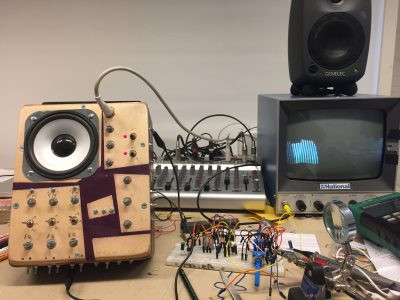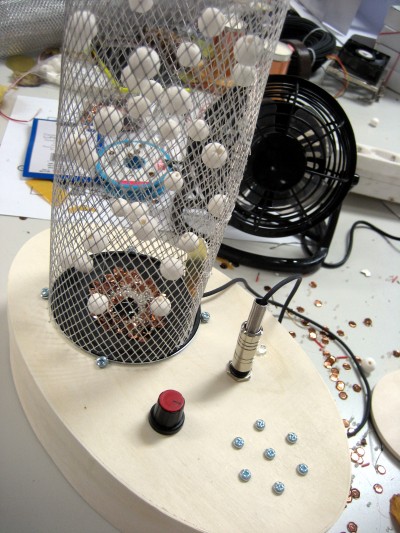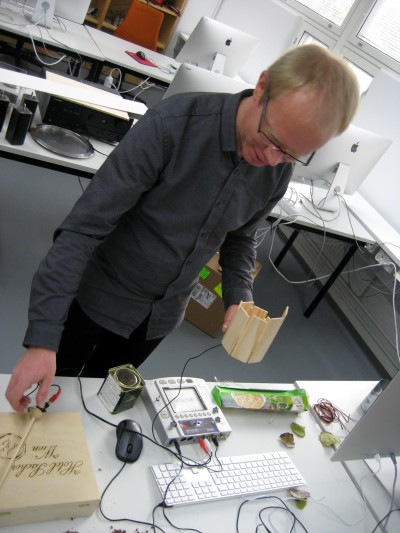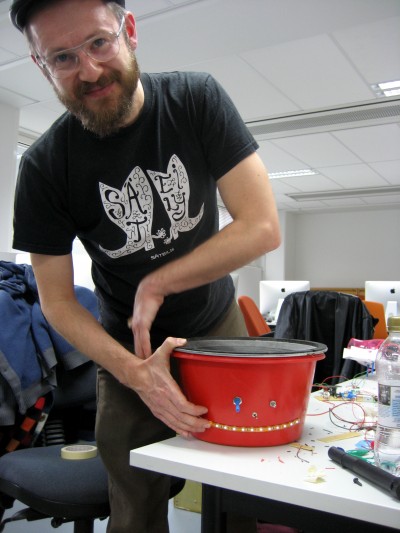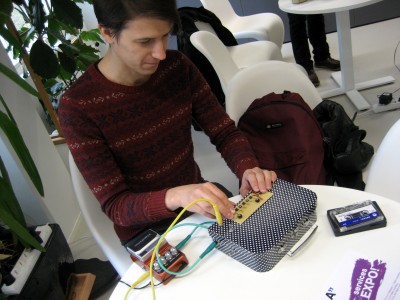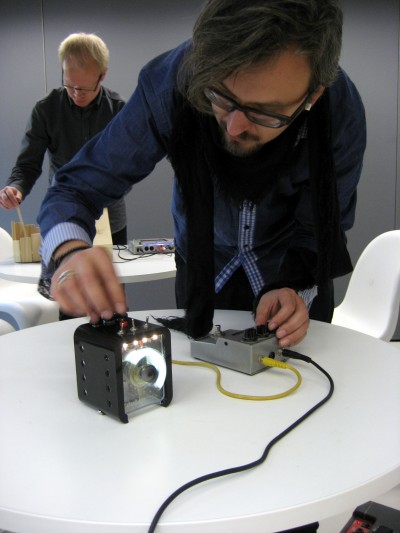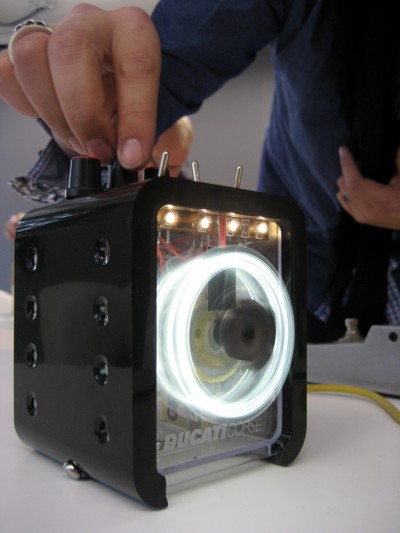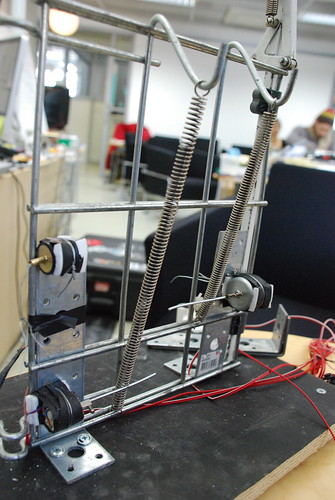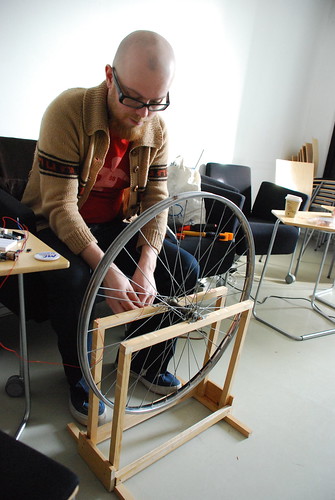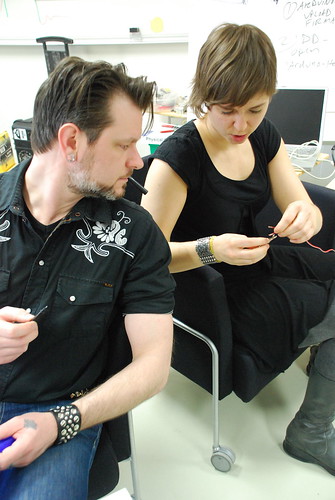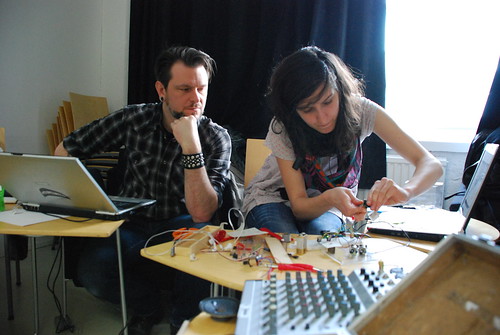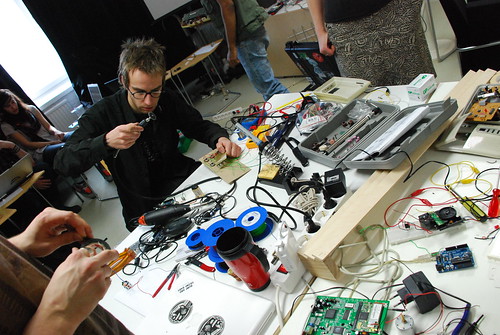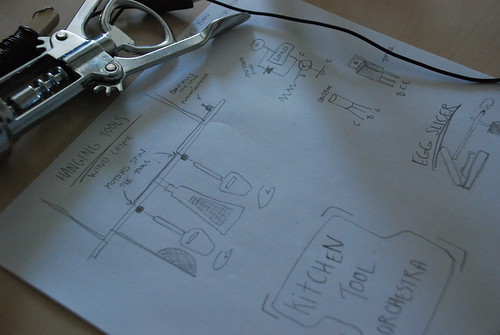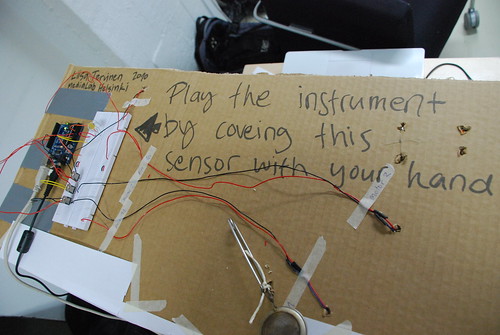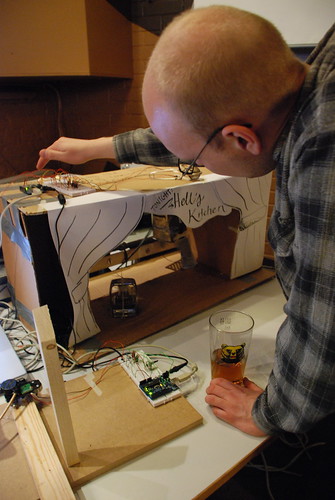Expr Sound Instruments
When musicians go to a shop and buy the latest Roland or Korg, they just take the music in the middle of the process I think, instead of taking it from the beginning. When you go and buy a robot or a machine or electronic device, you just forget half of the pleasure. It’s good to start with the origin and design your own sound sources and then play with them.
–Pierre Bastian (interviewed by Svetlana Maras)
This is a workshop which I mainly teach annually at the Media Lab of Aalto University, Espoo FI. I have also taught it at different schools and programs in Finland and beyond, and it could easily be adapted for other schools, festivals, and arts centers.
LEARNING OUTCOMES
Students will explore simple electronic circuits which make up the various components of an analog synthesizer, and combine them in a portable, battery-powered, sound-making instrument. There will be a final presentation on the last day of the workshop where students will present their instruments and teach others how to play them.
CONTENT
In this course we will explore simple electronic circuits which make up the various components of an analog synthesizer, including:
* Voltage Controlled Oscillators
* Voltage Controlled Filters
* Generative Sequencers
* Noise Generators
* Envelope Generators
* Voltage Controlled Amplifiers
* Mixers
* Distortions
* Microphone Inputs
You will have a chance to build some of these various circuits yourself, explore ways of controlling them, and combine them in unique and personalized sound-making instrument that is portable, has its own loudspeaker, and can be powered by 9V batteries.
There will be a final presentation on the last day of the workshop where students will present their instruments and teach others how to play them.
You are required to bring a wooden enclosure of some kind to build your instrument. Please locate this before the course begins! Cigar or wine-bottle boxes work very well if you find one large enough. You could also fabricate one in a FabLab with a laser cutter, for example. The lid of this box should not be more than 5mm thick. The size of your box should be at least 20cm x 15cm x 6cm, and preferably larger if you want more interface controls or a larger speaker.
If you want a larger speaker than the 8-10cm ones I will provide, please salvage one from an old boombox, clock radio, or hi-fi system. The bigger the speaker, the louder and lower in tone it will create. Make sure it fits inside your box, however.
RECOMMENDED TEXTS
Collins, Nicolas: Handmade Electronic Music: The Art of Hardware Hacking (Second Edition). Routeledge, 2009.
Mims, Forrest M. III: Engineer’s Mini Notebook Vol I: Timer, OpAmp & Optoelectronic Circuits & Projects. Master Publishing, 2004.
Mims, Forrest M. III: Engineer’s Mini Notebook Vol III: Electronic Sensor Circuits & Projects. Master Publishing, 2004.
Mims, Forrest M. III: Engineer’s Mini Notebook Vol IV: Electronic Formulas, Symbols & Circuits. Master Publishing, 2004.
Williams, Elliot. Logic Noise. https://hackaday.com/tag/logic-noise/
Wilson, Ray. Make: Analog Synthesizers. Maker Media, Inc, 2013.
PREREQUISITES
While prior experience with electronic circuits is not necessary, participants will be expected to have some working knowledge of sound and how it is produced electronically (terms such as frequency, amplitude, timbre, oscillator, amplifier, filter, etc, should all be familiar).
PREVIOUS + UPCOMING WORKSHOPS
2019
Feb – Aalto Media Lab, Espoo FI
Jan – Aalto University Wide Art Studies program, Espoo FI
2018
Nov – Helsinki Theater Academy, Helsinki FI
Apr – Aalto Media Lab, Espoo FI
Jan – Aalto University Wide Art Studies program, Espoo FI
2017
Dec – RITCS Audio Masterclass, Brussels BE
Sep – Helsinki Theater Academy, Helsinki FI
2015
Oct – Aalto Media Lab, Espoo FI
2014
Oct – Aalto Media Lab, Espoo FI
2013
Nov – Aalto Media Lab, Helsinki FI
Feb – Aalto Media Lab, Helsinki FI
2012
Feb – Aalto Media Lab, Helsinki FI
2011
Mar – Aalto Media Lab, Helsinki FI
2010
Mar – TAIK Media Lab, Helsinki FI
DOCUMENTATION
Videos from the workshop of students at the Sound and Light program of the Helsinki Theater Academy, AUG 2017
Pulse width modulation of two sawtooth waves. PLEASE UNMUTE SOUND FOR BEST RESULTS.
Stepped waveform output of the linear-feedback shift register plus digital-to-analog converter. PLEASE UNMUTE SOUND FOR BEST RESULTS.
Generative sequencer controlling a sawtooth wave oscillator. PLEASE UNMUTE SOUND FOR BEST RESULTS.
Sequencer-controlled oscillator and resonant low-pass filter. PLEASE UNMUTE SOUND FOR BEST RESULTS.
Experimental Sound Instruments Workshop, TAIK MediaLab Helsinki, 2013 from macumbista on Vimeo.
Images from a workshop with students of the Media Lab at Aalto University, Otaniemi/Helsinki, OCT 2014.
Images from a workshop with students of the Media Lab at TAIK (Taideteollinen korkeakoulu/University of Art and Design) Helsinki, 8-12 March 2010. Photos by Liisa Tervinen.
